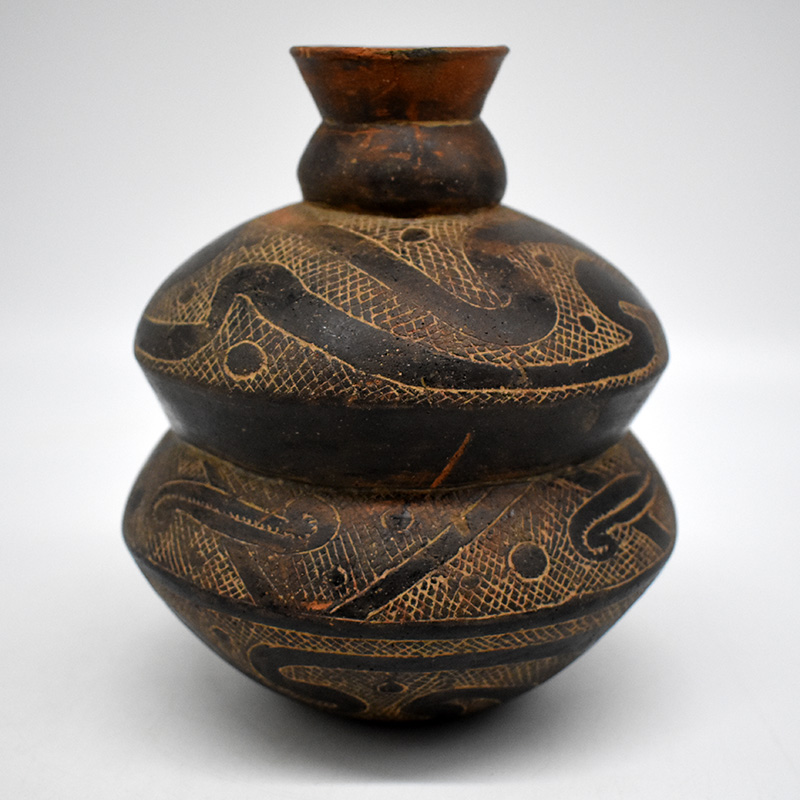
| Maker | Caddo potter |
| Date of Creation | 1400–1650 |
| Location | Middle Ouachita River Valley of Southwest Arkansas |
| Materials | Shell-tempered clay |
| Institution | The University of Arkansas Museum |
| Credit Line | The University of Arkansas Museum |
| Accession Number | 46-6-610 |
| Photo Credit | The University of Arkansas Museum |
The Caddo people occupied the Ouachita Mountains and Gulf Coastal Plain of southeastern North America for over 1,000 years. The Caddo homeland encompassed the four-state area of southwestern Arkansas, northwestern Louisiana, northeastern Texas, and southeastern Oklahoma. The Caddo were primarily farmers with extended-family homesteads separated from their neighbors by fields and woodlands. Farming was supplemented by hunting, and fishing. Communities were formed around a mound complex that functioned as a religious and community center. The Caddo first encountered Europeans when a remnant of Hernando de Soto’s North American expedition entered Caddo territory in 1541, seeking an overland route to Mexico (New Spain). Tribal members’ next encounters were in the early 1600s with French fur traders coming up from Louisiana and French missionaries coming down the Mississippi from Canada. The French established trading posts near Caddoan community centers and carried on a flourishing fur trade with the tribe throughout the 17th century. In the early 1800s, the United States government sought to ally with the Caddo in their wars with the native peoples of the southwest, especially the Creeks, but with little success. In 1835, the Caddo were forced to cede all of their land to the U.S. government, which eventually removed tribal members to a reservation in Oklahoma (Indian Territory). The Caddo made exquisite pottery for both practical food-processing needs and for ceremonial purposes. Ceremonial vessels would be placed with the deceased to provide sustenance for their journey to the afterlife. Caddo pottery is characterized by a highly-burnished surface, with incised cross-hatching, circles, and undulating lines. It is believed the designs represent themes in the Caddoan world view, such as the path of the journey to the land of the dead. The bottle shown here is known as a Hodges Engraved compound vessel, with a bottle on top of a bowl. The incised pattern of the top and bottom registers are mirror images of each other, while the middle register is a separate design altogether.

